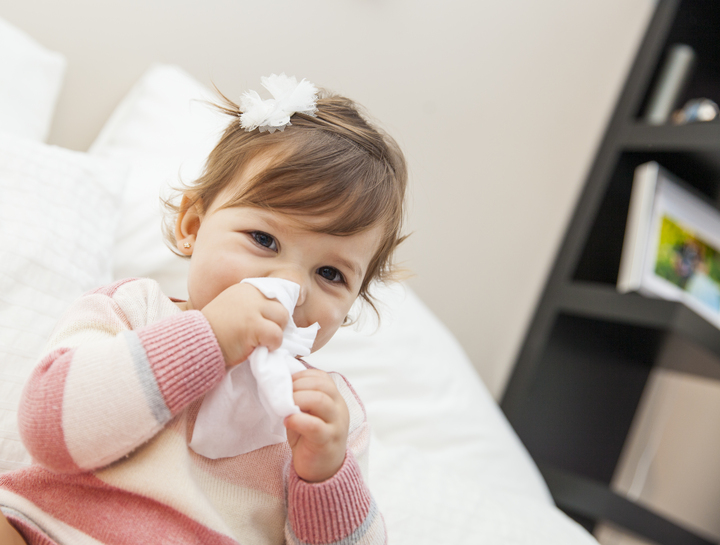What is the difference between a Cold and Flu?
Got a runny nose and a sore throat? Could it be the start of a cold or the flu? Here’s some basic information to help you understand a bit more about the differences (and similarities) between cold and flu symptoms.

Cold and flu infections
The common cold and flu are both respiratory tract infections (RTIs) and infect the parts of your body that help you breathe – such as your nose, throat and lungs.
- Cold viruses cause upper RTIs which mainly affect your nose and throat
- Flu viruses can cause upper or lower RTIs and can affect your nose, throat and lungs.
What causes colds and flu?
Sometimes we use the terms ‘the flu’ and ‘a cold’ interchangeably and although they are both caused by viruses – they are different illnesses caused by different types of viruses.
There are over 200 different types of virus that can cause a cold. With that many cold viruses circulating its hardly surprising that the common cold is the most common cause of illness seen in both children and adults.
Children tend to catch colds more frequently than adults and they may get up to 10 colds a year while adults only usually get up to 4 a year.
The flu, on the other hand, is usually caused by either type A or type B viruses (although there is another rarer type C). Most cases of flu are linked to an infection with the type A virus.
You can catch a cold or the flu at any time of the year – but they are usually more common in the winter months when we tend to spend more time inside with other people.
Know your cold and flu symptoms
Colds and flus can have similar symptoms, but there are some key differences. You will generally see the same range of cold or flu symptoms in children and adults – but sometimes children’s symptoms can last longer.
Cold symptoms include:
- Coughing and sneezing
- Blocked or runny nose
- Sore throat
- Fever
- Congestion (pressure in your ears and face).
Typical flu symptoms may include:
- Coughing (usually dry) and sneezing
- Blocked or runny nose
- Sore throat
- Fever or chills
- Aches and pains
- Headache
- Tiredness
- Diarrhoea or an upset stomach.
Here are a few tips to help you tell the difference between any cold and flu symptoms you have:
- Cold symptoms tend to appear gradually – flu symptoms can arrive suddenly
- A cold mainly affects your nose and throat – you may feel the effects of flu in a lot more places!
- A cold can make you feel unwell, flu can make you feel unwell and too exhausted to do anything.
You may be able to work out if you have the flu by the symptoms you have and how you are feeling, but the only definitive way of knowing if you have the flu is to get tested by your doctor.
The symptoms of colds and flu can be very similar to the symptoms of COVID-19 so it’s very important to get tested for COVID-19 immediately even if your symptoms are only mild.
Preventing colds and flu
Both colds and flu are very infectious diseases that can be spread through coughs and sneezes, and the viruses can live on your hands and surfaces for 24 hours – you can help reduce the risk of catching and spreading viruses by:
- Washing your hands regularly with water and soap
- Cough or sneeze into your elbow or use tissues
- Throw any used tissues in the bin as quickly as possible
- Clean surfaces regularly
The Australian Health Department recommends all people aged 6 months and over be vaccinated against the flu. Children under 5 years old have a higher risk of getting more severe flu infections that require hospitalisation – and free vaccinations are available for all children aged 6 months to under 5 years.
Relieving cold and flu symptoms
There is no cure for a cold or the flu once you have it – although there are things you can do to help relieve some of the symptoms and make you feel more comfortable, including:
- Using simple (age-appropriate) pain-relieving medications – such as paracetamol – to relieve muscle pain or if there is a fever
- Using saline nose drops or nasal sprays to help clear blocked noses
- Sipping warm drinks can help ease sore throats.
ALWAYS READ THE LABEL. FOLLOW THE DIRECTIONS FOR USE. INCORRECT USE COULD BE HARMFUL. IF SYMPTOMS PERSIST, TALK TO YOUR HEALTH PROFESSIONAL.


